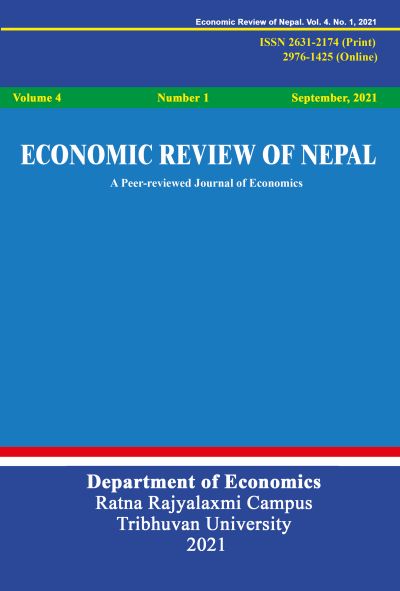Asymmetrical and Symmetrical Relationship between Financial Sector Development and Economic Growth: Evidence From Nepal
DOI:
https://doi.org/10.3126/ern.v4i1.64113Keywords:
financial sector development, economic growth, inflation, ARDL, NARDL, asymmetriesAbstract
The financial sector plays a pivotal role in accumulating and mobilizing funds within the economy, the sector that produces feedback effects for the economic progress of the nation. This paper examines the symmetrical and asymmetrical relationship between financial sector development and economic growth in Nepal. With time series data spanning from 1975 to 2019 AD, both symmetric autoregressive distributed lag (ARDL) and asymmetric effect ARDL (NARDL) models were employed in this paper. Furthermore, the study applied principal component analysis (PCA) to develop the financial sector development indicator. The findings revealed the pivotal role of financial sector development in driving economic growth in Nepal, although significant negative asymmetrical effects posed challenges to long-term growth. Additionally, alongside financial sector progress, factors—such as inflation and learning by doing—contributed to growth, while trade alone failed to have sufficient potency to spur economic expansion. While financial sector development enhanced Nepal's productive capacity, it was not observed singularly driving trade-led growth. Policymakers must prioritize relaxing policies and funneling resources effectively toward fostering financial sector growth and counteract potential negative impacts on economic development.
Downloads
Downloads
Published
How to Cite
Issue
Section
License
Copyright (c) 2021 Department of Economics, Ratna Rajyalaxmi Campus

This work is licensed under a Creative Commons Attribution-NonCommercial 4.0 International License.
This license enables reusers to distribute, remix, adapt, and build upon the material in any medium or format for noncommercial purposes only, and only so long as attribution is given to the creator.




